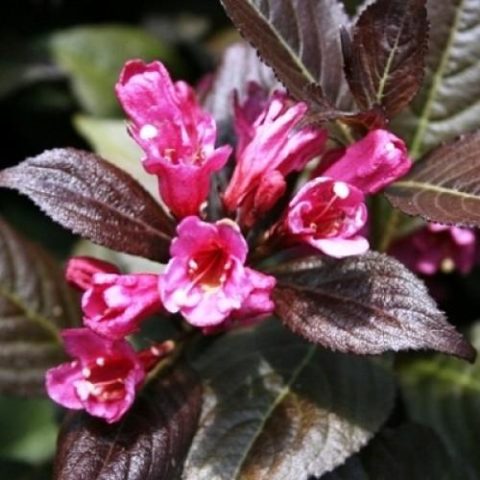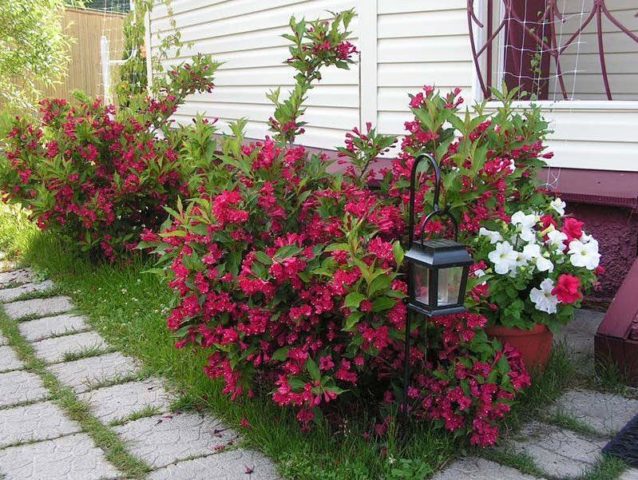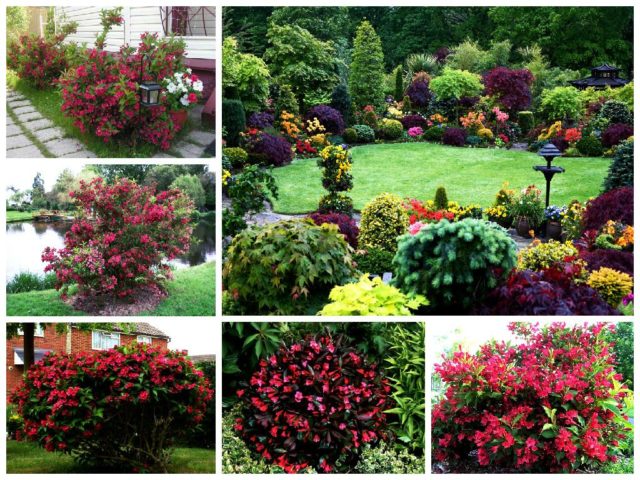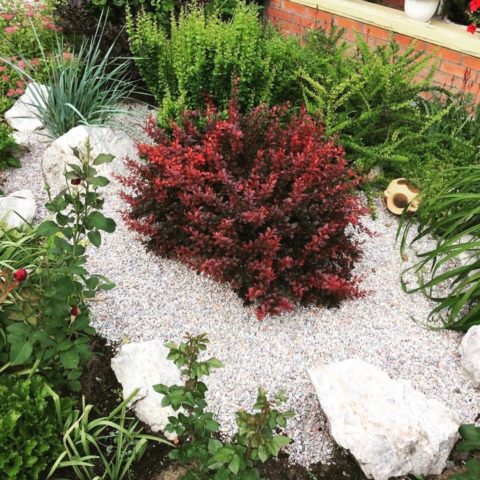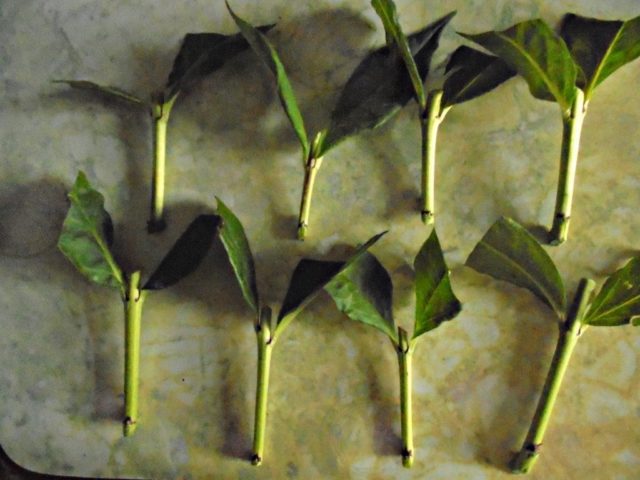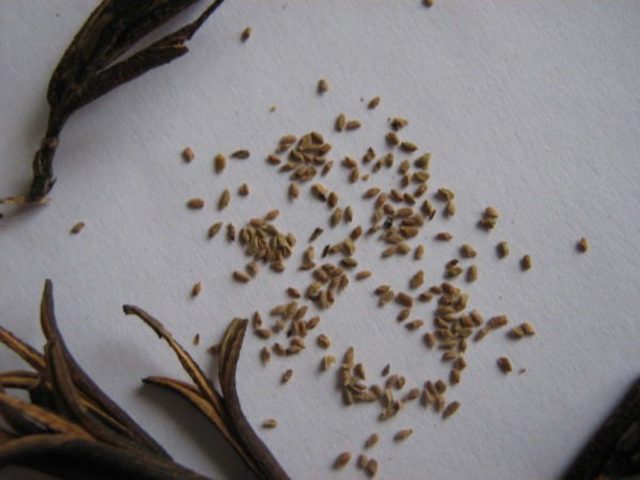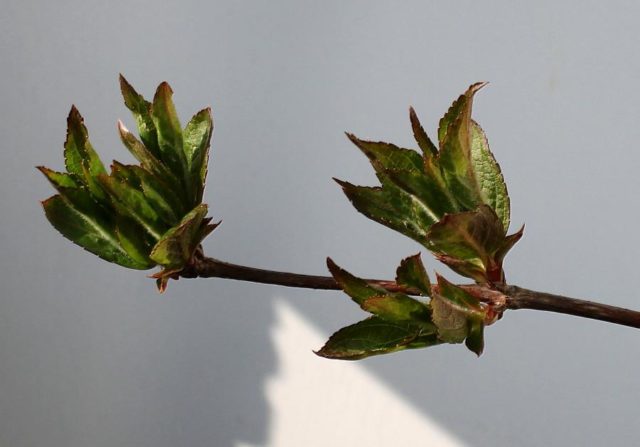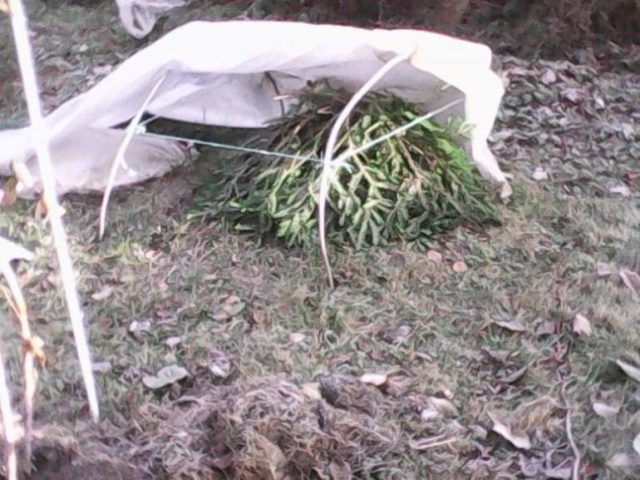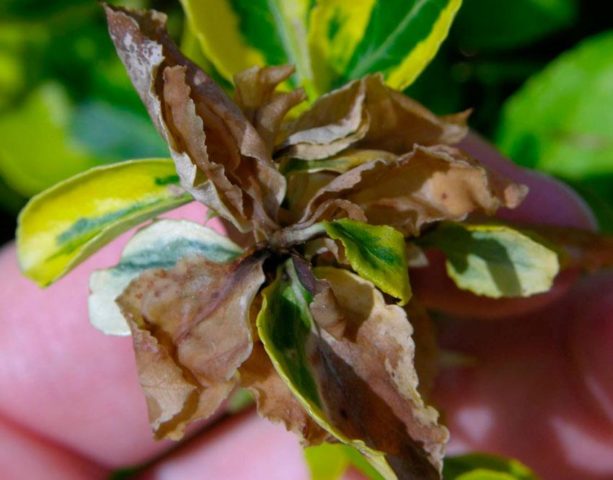Content
Weigela of the Honeysuckle family is named after the German botanist Weigel. This flowering shrub came to Europe from Southeast Asia, where more than a dozen species of this shrub grow. In Russia, weigela is found in the wild in the Far East. No more than 10 types of shrubs are cultivated in gardens and parks. Weigela Minor Black is one of the most beautiful members of the family.
Description of Weigela Minor Black
Dwarf deciduous shrub reaches a height of no more than a meter. Its shoots are mainly vertical. The dense, lush crown is formed from pointed leaves, different in color. The diameter of the crown of an adult weigela Minor Black shrub usually does not exceed 1 m.
The color range of the leaves is from red to dark purple. Some leaf blades become almost black over time. Shrub and flowering are notable. Bright or dark pink flowers cover the crown of the weigela, turning it into a garden decoration. Narrow five-petalled bells are collected in inflorescences of several pieces.
How Weigela Minor Black blooms
The main reason why weigela Black Minor has become popular with gardeners is the flowering of the shrub twice a year. The first time the shrub is covered with abundant flowers in June - July. This is the last year's shoots blooming. This fascinating process lasts up to four weeks.
It is noteworthy that Minor Black weigela flowers can change color over time. The pale pink bells get brighter and darker over time. Flowering ends with the formation of fruit bolls with seeds inside.
The second flowering in the season is provided by young shoots. And, despite the fact that this picture is not as bright as the first plant covered with delicate flowers in September, at least it looks exotic against the background of fading vegetation.
Application in landscape design
The undersized flowering weigela Minor Black is used as a link between tall stands and low annuals when creating various garden compositions.
Weigelu is used as an independent garden decoration or in combination with other varieties and types of garden plants.
Variants of using weigela Minor Black in landscape design are shown in detail in the photo.
Weigela perfectly complements the group planting of green plants. An unpretentious plant can coexist with juniper or thuja. Weigela is often used to shape an alpine slide. Bright foliage and lush flowering shrubs can be used to add volume to a flower bed against a background of stones.
The hybrid dwarf weigela Minor Black is also suitable as a tub culture. But usually shrubs are grown in flowerpots only up to three years of age. Then the plant is transplanted to a suitable place in the garden.
Breeding methods
Weigelu Minor Black is propagated by cuttings and seeds. A blank of planting material for cuttings is cut in the spring until flower buds are formed. Young branches with green bark are cut with a sharp tool at a 90 degree angle. The length of the workpiece should be no more than 15 cm.
The stalk must be treated with a root formation enhancer and left at room temperature for 12-14 hours.
Cuttings are planted in a loose mixture of sand and peat, so that the seedling is covered with soil by 1 cm.
It is necessary to regularly water future seedlings so that the soil is constantly moist. Rooting is better if you make a film cap or a mini greenhouse for the cuttings. It is imperative to ventilate the seedlings so that condensation on the walls of the shelter does not lead to decay of the plants.
Experienced gardeners advise planting cuttings in separate containers. The bushes need to be grown to a permanent place for one and a half to two years. To make the future seedling sufficiently developed and lush, the top of the cutting after the formation of the roots is shortened by a third.
The roots of cuttings are formed no earlier than a month and a half.
The plant is easy to propagate by seed. But it should be noted that Minor Black is a hybrid variety. Therefore, the varietal qualities of plants grown from seeds may differ from the parental variant.
The seeds are harvested in late autumn. No soaking or stimulation is required for germination. Seeds are sown in dry sand and watered until germination. High-quality seed material, subject to humidity and temperature conditions, usually germinates no later than in a month.
Weigela Minor Black reproduces well by self-seeding. It remains for the gardener to transplant the grown seedlings in the spring, choosing the most developed plants.
Layers can also be used to breed shrubs in the garden. To obtain a seedling in the fall, the lowest branch from the mother bush is added dropwise, after removing all the foliage, except for the top one. A healthy seedling will be ready by spring. It is separated and transplanted into a growing tub.
Planting and caring for Weigela Minor Black
When buying a weigela seedling, you should pay attention to the age of the plant. The most suitable for planting in the garden are three-year-old bushes. Weigela, blooming Minor Black, has a hard time transferring to a new place. Younger seedlings rarely take root or get sick for a long time.
Recommended timing
It is necessary to plant a shrub in a permanent place in open ground in the spring. Weigela Minor Black has very low frost resistance. Saplings take a long time to adapt to a new place. When planting in autumn, the plant does not have time to grow strong enough and may die in winter. In case of late acquisition of weigela, it is better to dig in the seedling in the garden, sprinkling the crown halfway with loose soil. In this state, a young plant can easily overwinter.
Site selection and soil preparation
To grow Weigela Minor Black, you need to choose a place that is illuminated by the sun most of the day. With a lack of light, the branches of the plant quickly become lignified. Such a bush hardly blooms.
A shrub with fragile branches and delicate flowers, it suffers greatly from the wind. Therefore, the site for planting weigels must be protected from drafts.
The soil for blooming weigela Minor Black needs alkaline or neutral. It is imperative to make a drainage layer to avoid stagnant moisture and soil acidification. The composition of the soil must be saturated with nutrients.
Weigela develops well and blooms, growing on loose soils. Therefore, when planting, it is advisable to add perlite, polystyrene or any other fine-grained drainage mixture to the soil. The soil should be composed of sand and turf in equal proportions. For nutritional value, it is necessary to add part of the compost or well-rotted manure.
How to plant correctly
Weigela Minor Black bushes are planted at a distance of about a meter from each other and from neighboring bushes. If the plant is located near buildings, then you need to retreat 1.5 - 2 m in order to ensure an approach to it from all sides.
The hole for planting weigela Minor Black should be about 50 cm deep. The grown weigela has a fairly large root system. The planting pit is recommended to be made in the form of a square with a side of 50 - 60 cm.Sequencing:
- Lay the drainage on the bottom with a layer of about 15 - 20 cm from broken tiles, large pebbles or other coarse-grained mixture.
- Add nitroammofoska and humus to the prepared soil mixture if the soil is not fertile enough.
- Place the seedling vertically.
- The soil should be poured evenly around the rhizome, lightly tamping.
- Water abundantly.
- Mulch the trunk circle with sawdust, peat or compost.
When planting Weigela Minor Black, you need to pay attention to the location of the root collar. It is important that it is not below the soil level.
Growing rules
Caring for Weigela Minor Black is not difficult. The main thing is that the soil is always loose and sufficiently moist.
Watering
You need to water the bushes regularly. In this case, it is important to ensure that moisture does not stagnate in the trunk circle. An adult bush requires up to 10 - 15 liters of water. Watering is done more frequently during dry summer months.
Top dressing
Blooming Weigela Minor Black is demanding on soil fertility. But, if the plant is overfed, or fertilizers are applied incorrectly, then flowering can not wait.
The first feeding is carried out in early spring. Sometimes fertilizers are applied before the snow cover melts. But experts consider this method ineffective. Together with melt water, the fertilizer will be dispersed over the site. For Weigela, such feeding is not enough to wake up and feed.
You can feed fertilizer in the spring with dry preparations, which need to be poured into the trunk circle of each bush. An adult plant requires about 50 g of a mixture of urea, superphosphate and potassium salt in a 2: 2: 1 ratio.
The next dressing should help the shrub form flower buds. This requires about 50 g of superphosphate and potassium sulfate in equal proportions per bush. Top dressing is best done with a liquid nutrient solution under the root.
To prepare the weigels for frost, they carry out the last fertilization of the season. You can use complex potassium preparations. Some gardeners bring in wood ash at the rate of 1 glass per 1 square meter when digging a site around the shrub.
Loosening, mulching
Weigela develops well and blooms luxuriantly, growing on loose soil. After watering, it is necessary to loosen the trunk circle to a depth of 10 cm each time.
In order not to waste time and effort on maintaining the looseness of the site for the weigela, you can mulch the near-trunk circle after watering with a thick layer. Mulch is prepared from a mixture of sawdust, compost and peat. The layer can be up to 10 cm.
Pruning, crown shaping
The main work of caring for Weigela Minor Black is to regularly prune the shrub to form the crown and maintain the health of the plant.
Pruning is carried out after flowering. It is necessary to remove the old branches and cut the young growth in half to give the bush the correct shape. Re-pruning with normal plant development is required no more often than after 2-3 years.
Weigels carry out sanitary pruning in the spring. In this case, dry and damaged branches are completely removed.
It is imperative to process the cuts on the branches with garden pitch or resin. Weigela is susceptible to fungal diseases, the pathogens of which can penetrate through cuts and wounds on wood.
Preparing for winter
The main problem with growing weigela Minor Black outdoors is its strong sensitivity to cold. The plant must be covered for the winter. Due to the low winter hardiness of the Minor Black weigela, the culture is not recommended for planting in the northern regions.
Before the onset of frost, the trunk circle is covered with a thick layer of compost. The branches of the plant must be carefully pulled together with twine or wire. After that, wrap it up with kraft paper, agrospan or other insulating material.
Rodents pose a danger to the plant in winter. To protect the bush from mice, it is necessary to compact the snow in the trunk circle. You can pour water around the weigela. Then the mice will not be able to reach the plant through the ice layer.
In early spring, it is imperative to shake off heavy wet snow from the weigela's shelter. Its fragile branches break easily under the weight of the snow mass.
Pests and diseases
Early leaf fall, spots and light bloom on the Minor Black weigela plates signal the infection of the weigela with gray rot, rust or spotting.
Bordeaux liquid is used to combat the fungus. The drug is diluted according to the instructions and sprayed over the leaves.
If weigelu is struck by root cancer, then you will have to part with the bush. This disease spreads quickly and can affect any plants in the garden. In order not to risk the health of the pets, the diseased plant must be urgently dug up and burned.
Thrips, aphids and spider mites often infect weigela Minor Black bushes. To control them, you can use any insecticide that is sold to protect against leaf-eating insects.
Conclusion
Weigela Minor Black looks spectacular in any garden combination. Gardeners argue that the only difficulty in caring for a shrub is getting it right for winter. Weigela will thank for the labors with a lush double flowering.
